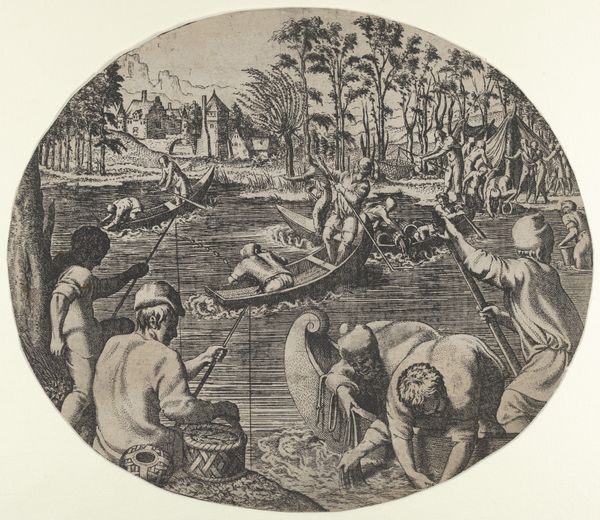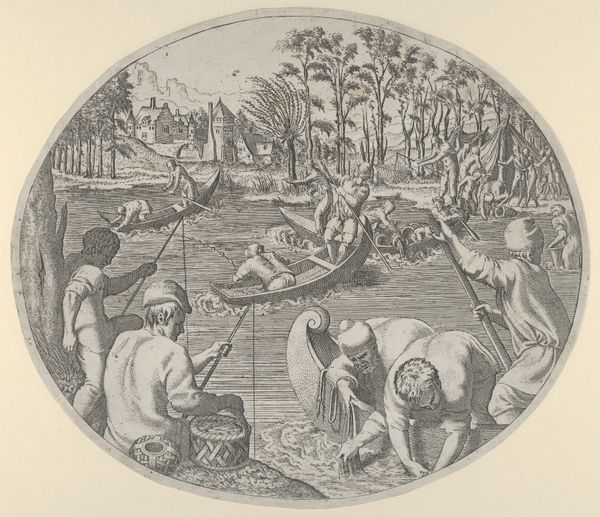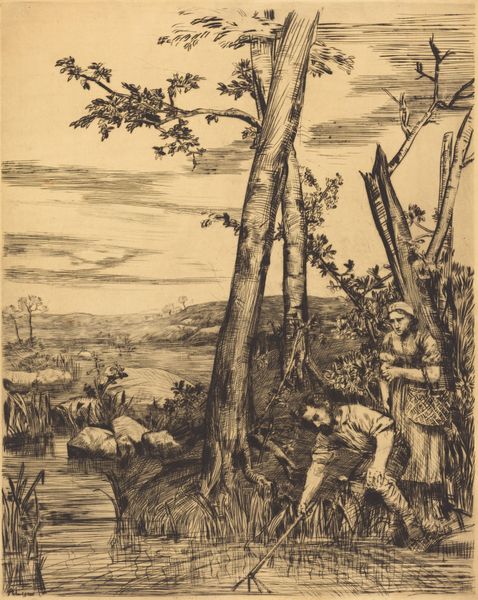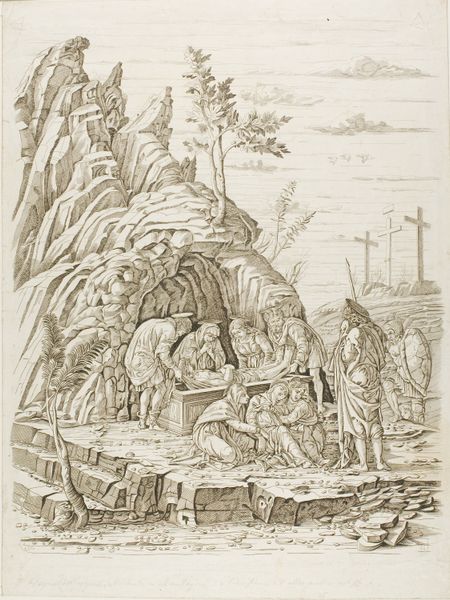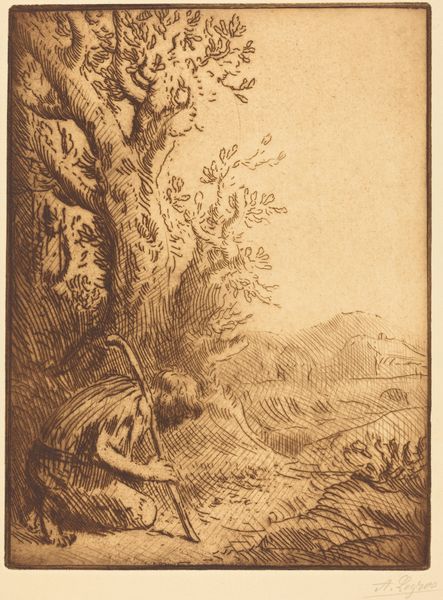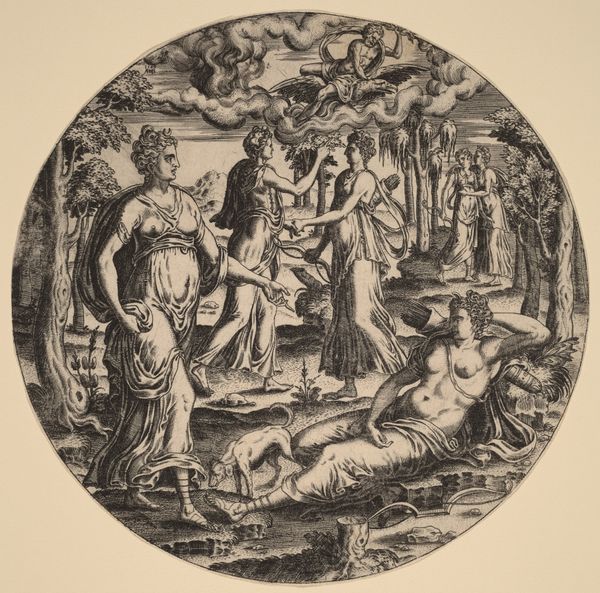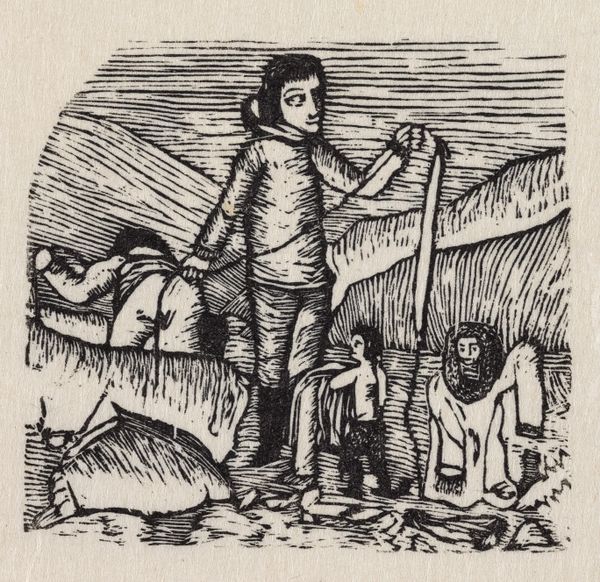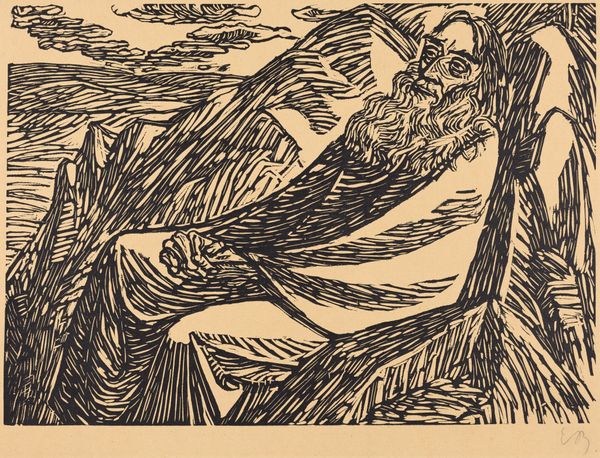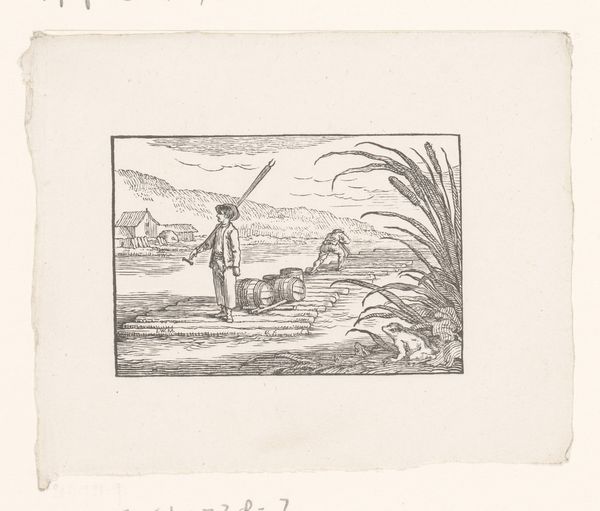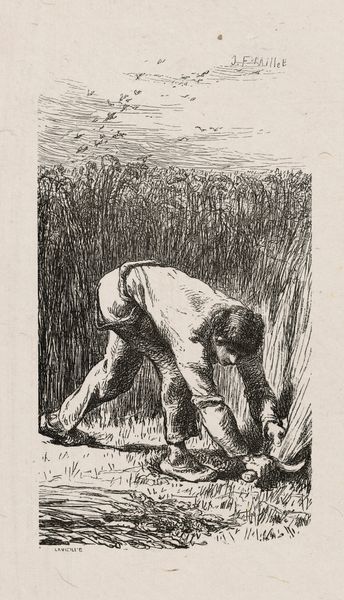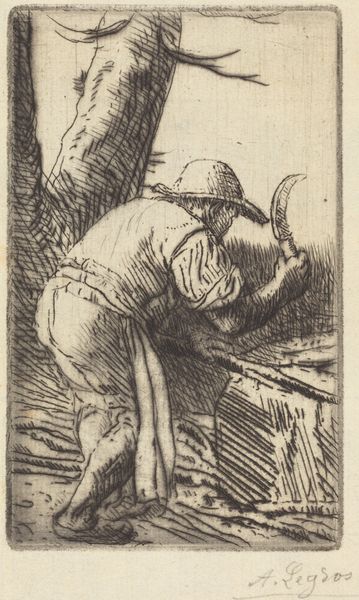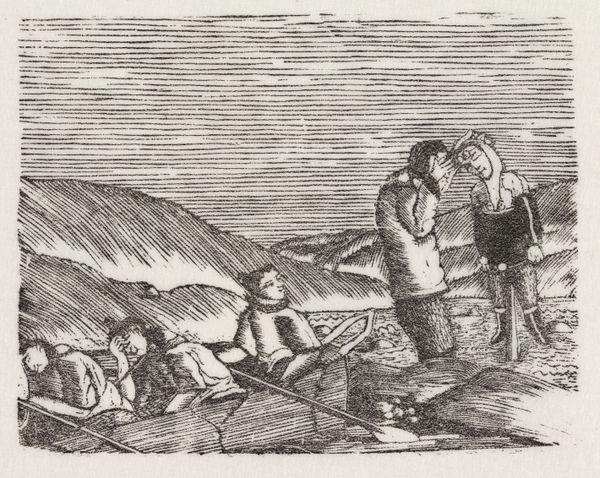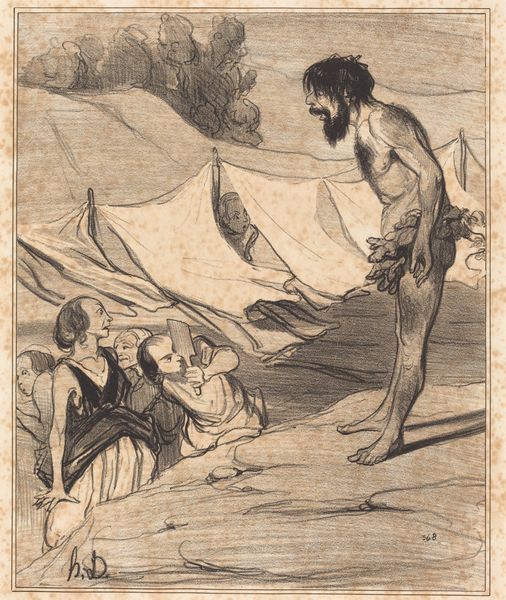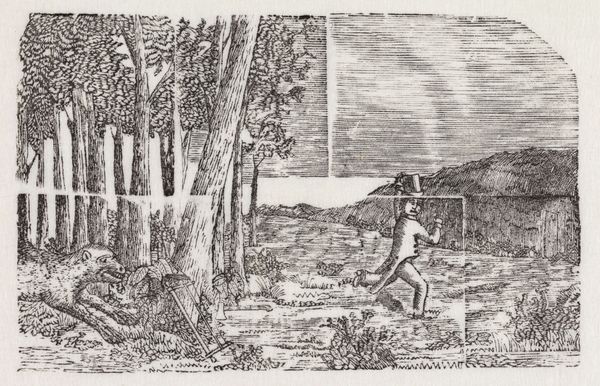
drawing, oil-paint, ink, pastel
#
17_20th-century
#
drawing
#
oil-paint
#
landscape
#
ink
#
genre-painting
#
pastel
#
naturalism
#
realism
Copyright: Public Domain
Editor: This drawing, "Drawing for the primer_ Ear of corn" created around 1905 by Hans Thoma, uses ink, oil paint, and pastel. It has an almost illustrative quality. I'm curious, what aspects stand out to you in terms of materials or process? Curator: It's tempting to see it just as a genre painting, but look closely at the labor being depicted. The artist isn’t just showing us a landscape, they are showing us production. Consider the physical toil, the sweat equity invested to gather the wheat. Editor: Yes, you can almost feel the weight of the labor. Does the interplay of ink, pastel, and oil hint at the class dimension in this image? Curator: Precisely. How are the raw materials harvested and distributed? The value lies not only in the wheat itself, but in the energy needed to make it. This also points to its worth beyond simple visual delight. What can you say about the artist himself? Editor: Thoma seems rooted in a respect for the land and the community that works it. It makes me consider our consumption habits and where resources really come from. Curator: Exactly. It’s easy to see pastoral charm, but by focusing on the materiality and its inherent implications, the drawing pushes us to look beyond romantic notions. It also points to the inherent inequalities within agricultural production. Editor: This lens really shifts my perspective. I’m going to explore further how artistic expression shapes cultural dialogues around production and labour. Curator: Indeed, understanding the ‘how’ helps reveal the ‘why.’ It encourages viewers to reflect on consumption and the systems sustaining us.
Comments
No comments
Be the first to comment and join the conversation on the ultimate creative platform.
